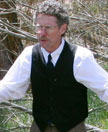Speakers
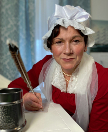 Abigail Adams
Abigail Adams
Presented by Jessica Downing-Ford: Abigail Adams (1744-1818) was born to a minister father and humanitarian mother. They instilled in her a deep sense of service, as well as a passion for education—qualities which made her the object of John Adams affection. Married in October of 1764, their lives became inextricably woven into the fabric of this country. Abigail witnessed the revolution from their farm in Braintree, Massachusetts, while John was serving in the Continental Congress. After the war she traveled to Europe accompanying John on his diplomatic assignments. Abigail served as our first Second Lady and our second First Lady. She felt strongly that women should be formerly educated and have rights independent of their husbands. In a time when Coverture was law, Abigail made and kept “Money which I call mine.” An avid letter writer, more than two thousand of her letters still exist creating an unparalleled narrative of her time.
Jessica Downing-Ford graduated Emerson College with a BFA in Performing Arts but it was several decades later that she discovered her love of Chautauqua. She enjoys bringing Abigail Adams to life for students of all ages, as well as coaching those pursuing their own performances. She is a founding member of the Grand Valley History Players and is currently researching new characters.
Suggested Reading: Abigail Adams, A Writing Life by Edith B. Gelles. New York, Routledge, 2002., Abigail Adams, A Life by Woody Holton. New York, Simon & Schuster, 2010., Dear Abigail, The Intimate Lives and Revolutionary Ideas of Abigail Adams and Her Two Remarkable Sisters by Diane Jacobs. New York, Ballantine Books, 2014.
 Clara Barton
Clara Barton
Presented by Susan Marie Frontczak: Hear Clara’s tribute to the soldiers who serve in our armed forces and their families. Find out how she worked her way through government red tape both to care for the wounded on the Civil War battlefield and years later – when women still had no political standing – to convince the United States government to bring the Red Cross to America. Clara Barton invites us to look at care and compassion on a far-reaching scale. Her wit, fortitude under fire, and dedication to the cause of humanity stand as a role model for all time.
Prior to her Chautauqua work, Susan Marie Frontczak built a storytelling repertoire on literature and history. Frontczak recognizes that Barton was a colorful storyteller of her own life, as evidenced by the vast stores of primary documents available through the Library of Congress, making for rich mining in bringing her story to life on the Chautauqua stage.
Suggested Reading: The Story of My Childhood by Clara Barton. Baker & Taylor Company, 1907., A Woman of Valor: Clara Barton and the Civil War by Steven B. Oates. The Free Press, 1994., Clara Barton, Professional Angel by Elizabeth Brown Pryor. University of Pennsylvania Press, 1987
 Katharine Lee Bates
Katharine Lee Bates
Presented by Sue Breeze: Born in Falmouth, Massachusetts in 1859, Katharine Lee Bates graduated from Wellesley College and went on to become head of its English Literature Department. In 1893 she arrived in Colorado Springs to spend the summer lecturing at Colorado College and made the infamous excursion to the top of Pikes Peak. The view inspired her to write the poem that was later set to music and titled, “America the Beautiful.”
During her lifetime, writing was a continuing priority. Her works include children’s stories, poetry, plays, books of verse, textbooks, and travel books based on her three sabbatical years in Europe and the Middle East.
Katharine’s legacy to us is her ability to find inspiration in the world around us, her belief in the best of people and her courage to take risks in the fight against the injustices of the world. She was a woman of her times and for all times.
Sue Breeze holds a degree from the Goodman Theatre School of Drama at the Art Institute of Chicago and performs in film, television, corporate events, and repertory theater. Having ten years of experience as a drama teacher for all age groups at the Colorado Springs Fine Arts Center, she currently provides Artist in Residence programs to develop self-expression. Sue is also a Personal Presentation and Intuition Coach and facilitates workshops and one-on-one coaching. She portrays Katharine Lee Bates with a reminder to “renew our faith in America” and inspires audience to treasure their memories of our country and to live their dreams.
Suggested Reading: Dream and Deed: The Story of Katharine Lee Bates by Dorothy Burgess. The University of Oklahoma Press, 1952. America the Beautiful: The Stirring True Story Behind Our Nation’s Favorite Song by Lynn Sherr. Public Affairs, a member of the Perseus Book Group, Cambridge, MA, 2001, Katharine Lee Battes, Girl Poet by Elisabeth P. Myers. Bobbs-Merrill Company, 1961
 Dr. Rose Kidd Beere
Dr. Rose Kidd Beere
Presented by Rebecca Hunt: Dr. Rose Kidd Beere spent her childhood on western military posts where her father commanded the Tenth Cavalry, one of the most significant Black units on the frontier. Widowed at a young age, with three young sons, Rose put herself through the Northwestern University Women’s Medical College. Her first practice, in Durango, brought her to Colorado. Her next move, to Denver, saw her running the new Home for Dependent and Neglected Children. Perhaps her most important adventure sent her to the Philippines in 1898 to minister to Colorado’s troops in the Spanish American War. Her spirit and drive made her stay memorable. The remainder of her life she devoted to public medicine, including serving as the first woman superintendent of Denver General Hospital. Dr. Rose Kidd Beere exemplifies the best of the western woman’s grit and ability to get things done.
A native of Wyoming, Rebecca Hunt has been both a museum curator and a historian studying immigrants, community, and women. Her Ph.D., from CU Boulder, is in social history of the American West. She teaches at Metropolitan State College of Denver and is the archivist at Presbyterian St. Luke’s Medical Center. She began her portrayal of pioneer Colorado doctor, Rose Kidd Beere in 1999.
Suggested Reading: Colorado: A History of the Centennial State by Stephen Leonard and David McComb. University Press of Colorado, 1982., Rocky Mountain Medicine: Doctors, Drugs, and Disease by Robert Shikes. Johnson Books, 1986., Medicine Women: The Story of Early American Women Doctors by Cathy Luchetti. Antelope Island Press, 1982.
 Erma Bombeck
Erma Bombeck
Presented by Susan Marie Frontczak: Erma Bombeck captured with poignancy and humor the daily life of a new American phenomenon: the suburban housewife. Believing you had to be able to laugh at life to get through it, she captured the essence of the housewife’s daily struggles in her column “At Wit’s End” three days a week, eventually appearing in 900 newspapers across the country and in books such as I Lost Everything in the Post-Natal Depression and The Grass is Always Greener Over the Septic Tank. She brought to American awareness the life of women whose lives otherwise felt invisible and taken for granted. She let women across America know: You are not alone. In fact, we number in the millions. I, too, am an American housewife, and I will laugh by your side.
Find out how Erma got started as a humorist. And chuckle along as she pokes fun at kids, pets, husbands, household appliances, and especially herself in her absurd attempt to be everything the books, magazines, and advertisements say we are supposed to be. Over the course of 30 years Erma Bombeck produced a vast supply of priceless material that teaches us, “If you can laugh at it, you can live with it.”
Susan Marie joins millions of Erma Bombeck fans in the U.S. and around the world in celebrating one of the 20th century’s most prolific writers and humorists. As a teen, Susan Marie competed with her mother to see which of them could snag the monthly Good Housekeeping magazine first, in order to read Erma Bombeck’s column.
 Irene Castle
Irene Castle
Presented by Susan Marie Frontczak: Vernon and Irene Castle, were responsible, more than any other couple, for the rage in social and ballroom dancing that swept across America in the years leading up to the first world war. They took a dance form frowned upon by respectable society as unseemly and transformed it with their grace and style into a most elegant and fashionable hobby for rich and poor alike, for old and young. The Castles enchanted the public because here was a married couple who showed affection to one another in public! In these years before even the silent film industry had taken hold, the Castles laid the groundwork for public fascination with private romance. The story of Vernon and Irene Castle highlights three hallmarks of the American Spirit: entrepreneurial drive, artistic expression, and setting trends in fashion. “Their brief, almost incandescent career stands as a metaphor of an entire glittering, fragile world soon to be shattered by the horror of world war.”
Susan Marie Frontczak began studying Vintage Dance in 1990. She has taught at Vintage Dance events across the country, including the Scott Joplin Ragtime Festival in Sedalia, Missouri, Cincinnati Dance Week, and regular Sunday afternoon Tea Dances in Denver and Boulder. She has found that Irene Castle’s story not only amuses and inspires, but also opens a deeper understanding of the roots of American social dance.
Suggested Reading: Castles in the Air by Irene Castle. Doubleday & Co., NY. 1958. Autobiography., My Husband by Irene Castle. Scribner, NY. 1919., Modern Dancing by Vernon Castle. 1914. Instructions on how to dance all the modern dances, with notes on style., Vernon and Irene Castle’s Ragtime Revolution by Eve Golden. University Press of Kentucky, 2007., Le Tumulte Noir: Modernist Art and Popular Entertainment in Jazz-Age Paris, 1900-1930 by Judy Blake. Pennsylvania State University Press, 1999.
 Geoffrey Chaucer
Geoffrey Chaucer
Presented by Thomas Napierkowski: Geoffrey Chaucer was a remarkable man. He was in the personal service of three kings of England, for whom his duties ranged from foreign missions of a diplomatic nature to those of the controller of customs for the port of London. More importantly, in the course of his busy life, Chaucer found time to write; and in those moments stolen from his official career, he developed into the consummate poet of the English Middle Ages and one of the two or three best poets of the language. What’s more, he remains today, after 600 years, the most enjoyable and approachable of the great English poets.
During his life and the century following his death, Chaucer was acknowledged as the father of English poetry and revered as “a great rhetorician, philosopher-poet and master of the study of ethics.” Today, he is additionally admired for his brilliant character portraits (including his self-portrait), his sympathetic insights into the drama of human life, the remarkable variety of his literary works and his unmatched mastery of irony.
Thomas Napierkowski has taught for almost 30 years in the Department of English at the University of Colorado in Colorado Springs, specializing in medieval literature, with particular emphasis on the works of Chaucer and of the fifteenth century. He has a M.A. and Ph.D. from the University of Colorado. Napierkowski has also worked and published in the fields of minority American literature and Slavic literature.
Suggested Reading: The Riverside Chaucer by Geoffrey Chaucer, ed. Larry D. Benson. Houghton Mifflin, 1987., The Canterbury Tales by Geoffrey Chaucer. Norton & Company, 1989., The Portable Chaucer ed. Theodore Morrison. Viking Press, 1977.
 Marie Curie
Marie Curie
Presented by Susan Marie Frontczak: Arguably the most famous woman scientist, Madame Marie Curie (1867-1934) changed the world in which we live through her discovery of radium and radioactivity. Marie Curie was the first European woman to receive a doctorate in Physics; the first woman to receive a Nobel Prize; the first woman to teach at the University of Paris; and the first person to receive a second Nobel Prize. Through collaboration with the medical community, the Curies discovered and established the first successful radiation treatments of cancer. Furthermore, both by example and in running her own laboratory, Marie Curie opened the doors of science to women world-wide.
But Marie Curie had to conquer significant obstacles before even making it into the laboratory. From the political oppression of her childhood, to financial straits, to the tragedy that forced her into single motherhood as well as further world prominence, Curie’s life as scientist, mother, and teacher reveals a compelling journey.
In portraying Maria Skłodowska-Curie, across the U.S. and abroad, Susan Marie pays homage to their shared Polish heritage. Susan, like Marie, enjoyed school and promotes awareness that academic enthusiasm can lead to outstanding achievement. Marie Curie’s perseverance in purifying a grain of radium from a ton of pitchblende, in part, inspired Susan to major in Engineering at Swarthmore College, and earn a master’s degree from the Wang Institute of Graduate Studies. She worked as an engineer for fourteen years before pursuing full time writing and presenting.
Suggested Reading: Madame Curie: A Biography by Eve Curie. Doubleday, Doran & Co., 1937., Marie Curie, A Life by Susan Quinn. Simon & Schuster, 1995., Marie Curie and the Science of Radioactivity by Naomi Pasachoff. Oxford University Press, 1996.
 Walt Disney
Walt Disney
Presented by David Skipper: Walt Disney was a optimal behaviorist, according to his friend Ray Bradbury. Join Walt as he takes you on a magical and nostalgic journey into the realms of animation, motion picture production, theme park and urban development. Walt shares life experiences that helped mold him into an optimal behaviorist and shares how a little fortuosity can help make your dreams come true. This program is not affiliated with or endorsed by the Walt Disney Company.
David Skipper is a seasoned storyteller and actor, having over fifteen years of theatrical performance experience. He has utilized his Celtic, Hispanic and Native American ancestry to enhance his storytelling gifts throughout the years. Skipper is a former writer for “The Scottish-American” and “Scottish Banner” newspapers. He writes children’s fantasy and horror for his own amusement. He received his M.A. in communication arts from the University of West Florida in Pensacola.
Suggested Reading: Walt Disney, An American Original by Bob Thomas. Simon and Schuster, NY, 1976, 1994, Walt Before Mickey by Timothy S. Susanin. The University Press of Mississippi, 2011, The Wisdom of Walt by Jeff Barnes. Aviva Publishing, Lake Placid, NY 2015, The Magic Kingdom: Walt Disney and the American Way of Life by Steven Watts. Houghton Mifflin Company, NY, 1997
 Amelia Earhart
Amelia Earhart
Presented by Elsa Wolff: Arguably the most famous Aviatrix of her time, Amelia Earhart (1897-1937) was much more than a noted pilot. She pushed through social barriers and served as a role model and inspiration to many – both men and women – because of her courage, determination and spirit of adventure. In a time when girls were expected to behave like ladies, Amelia pushed through social expectations even from a young age. Overcoming a family who moved frequently and an alcoholic father, she continued to look for meaning and adventure in her life. Amelia’s life story reveals the developing world view from the turn of the century into the Great Depression, including: the development of the machine age and aviation; the rising role of women in unconventional careers; and the impact of marketing on public image. She became an American hero during a time when there was a national obsession with record setting/breaking as the world was suddenly looking at Americans as trend-setters, whereas for centuries America had been trying to emulate Europe. Amelia spoke out with passion on the issues of women striving for equality in education, career opportunity and wages. A supporter of the nation’s new airline industry, she also helped pave the way for people to look at travel by airplane as a viable and reliable means of transportation.
Storyteller, singer and speaker for over 10 years, Elsa Wolff, who enjoys bring literature to life for children and adults alike, has recently developed the Character of Amelia Earhart for Living History Presentation. Elsa shows the same courage, poise and spirit of adventure as Amelia Earhart and will captivate the audience with her personable portrayal of aviation’s “Queen of the Air”.
Suggested Reading: Amelia Earhart, 20 Hrs., 40 Min. (New York: G.P. Putnam’s Sons, 1928), Amelia Earhart, The Fun of It (Chicago, Ill.: Academy Chicago Publishers, 1932), Amelia Earhart, Last Flight (New York: Harcourt, Brace, 1937) Compiled GP Putnam, Soaring Wings by George Putnam, (New York: Harcourt, Brace & Co., 1939), The Sound of Wings by Mary S. Lovell (New York: St. Martin’s Press, 1989)
 Jonathan Edwards
Jonathan Edwards
Presented by Jack R. Van Ens: Jonathan Edwards (1703-1758), the Puritan theologian who has been called the greatest mind produced in America, was also the most inspirational theologian of religious revivals. Edwards spearheaded the Great Awakening of the 1730’s and 1740’s in the colonies. He was no mean-spirited Elmer Gantry figure, as many assume after reading his fiery sermon, “Sinners in the Hands of an Angry God.” He and his works flowed as the fountainhead of a movement from which streamed a new nation, shaped by the contours of Calvinist revivalism. Edwards’ story is of great success and great tragedy as he was banished to Indian territory after leading the most influential church in the colonies at Northampton, Massachusetts for over two decades.
Jack R. Van Ens received his Master of Divinity in 1972, his Master of Theology in 1976 and his Doctorate of Ministry in 1984 from the Princeton University/Seminary. He is currently the president and CEO of Creative Growth Associates where he instructs and leads educational, business and religious non-profit groups.
Suggested Reading: Jonathan Edwards, Religious Traditions and American Culture by Joseph Conforti. University of North Carolina Press, 1995., A Jonathan Edwards Reader, ed. John E. Smith. Yale University Press, 1995., Jonathan Edwards’ Writings: Text, Context, Interpretation ed. Stephen Stein. Indiana University Press, 1996.
 Diego Martín, el vaquero
Diego Martín, el vaquero
Presented by Angel Vigil: Diego Martín, el vaquero, the Spanish colonial cowboy, is a true American hero. He was the first cowboy to ride the open ranges and sleep under the stars; the first cowboy to tame the wild horses of the plains and deliver vast herds of cattle across great distances; and the first master of the basic eternal cowboy skills-riding and roping. El vaquero was the repository of highly practical and effective Spanish wisdom and experience in the ways of horses and cattle, developed over generations on the open plains of European Spain and New Spain in the Americas. His language gave us the words we now accept as common cowboy “lingo.”
Diego Martín, el vaquero, is a composite character based upon traditional vaquero stories and histories. His story is the living history of the origins and development of traditional cowboy practices in the American West.
An award-winning author, educator, and storyteller, Angel Vigil is Retired Chairman and Director of Drama of the Colorado Academy Fine and Performing Arts Department in Denver. Angel’s. awards include the Governor’s Award for Excellence in Education, a Heritage Artist Award, a Colorado Council on the Arts Master Artist Award, the Mayor’s Individual Artist Fellowship, and the Colorado Theatre Educator of the Year Award. He is also the author of six books on Hispanic culture and arts and his book on the cowboy west is Riding Tall in the Saddle, the Cowboy Fact Book.
Suggested reading: Dary, David. Cowboy Culture, A Saga of Five Centuries. Lawrence, Kansas: University Press of Kansas, 1989., Mora, Jo. Californicos, The Saga of the Hard-riding Vaqueros, America’s First Cowboy. Garden City, New York: Doubleday & Company, 1949., Rojas, Arnold R. Last of the Vaqueros. Fresno, Calif.: Academy Library Guild, 1960., Vigil, Angel. Riding Tall in the Saddle: The Cowboy Fact Book. Greenwood Village, Colorado: Libraries Unlimited, 2002., Vigil, Arnold, ed. Enduring Cowboys: Life in the New Mexico Saddle. Santa Fe, N.M.: New Mexico Magazine, 1999.
 Alexander Hamilton
Alexander Hamilton
Presented by Hal Bidlack: General Hamilton was a self-made man in an era when the term meant much more. He rose from poverty and an ignoble birth to become a general, a leader, and the founder of our economic and legal systems. Perhaps most impressive is the breadth of his service. He served nobly in three arenas: in uniform, in office, and with the quill. After serving as George Washington’s closest aide, General Hamilton earned a combat command where he led his troops from the front, and was the first man over the walls during the climactic Battle of Yorktown. At the age of 32, he was this nation’s first Secretary of Treasury. He was the author of a variety of pamphlets calling for the American Revolution, and was the principal author of the Federalist Papers, perhaps the greatest writing on American political thought ever crafted.
Hal Bidlack is a lieutenant colonel in the United States Air Force and is currently assigned to the United States Department of State in Washington. He holds all his academic degrees from the University of Michigan, including a Ph.D. in political science, and regularly portrays Hamilton around the country as well as on the public radio program, The Thomas Jefferson Hour.
Suggested Reading: Alexander Hamilton, American by Richard Brookhiser. The Free Press, 1999., Alexander Hamilton: A Biography by Forrest McDonald. W.W. Norton & Company, 1979., Selected Writings and Speeches of Alexander Hamilton, ed. Morton J. Frisch. American Enterprise Institute for Public Policy Research, 1985.
 Thomas Jefferson
Thomas Jefferson
Presented by Jack Van Ens: James Parton, a nineteenth-century biographer of Jefferson, described him as someone who “could calculate an eclipse, survey an estate, tie an artery, plan an edifice, try a case, break a horse, dance a minuet, and play the violin.” This description of Jefferson’s capabilities is even more stunning because Parton was focusing on a young Jefferson who had not yet written The Declaration of Independence. What kindled the fires of Jefferson’s soul so that his interests glowed with a fierce intensity was his passionate search for the truth. Jefferson knew that, while what is unknown is humanity’s greatest challenge to discover, uncertainty is the heart’s gravest fear.
Thomas Jefferson, the third president of the United States, was born on April 13, 1743. As a student and young legislator, Jefferson read widely in Greek classics, Shakespeare, and the Bible. Jefferson founded the University of Virginia and also donated his 7,000 volume library to the United States government. He was a man of immense talents and multiple interests, not the least being religion and its place in American society. Not only was Jefferson a statesman, but a scientist, architect, farmer educator, inventor, geographer, lover of the arts and a searcher of the truth.
Jack R. Van Ens received his Master of Divinity in 1972, his Master of Theology in 1976 and his Doctorate of Ministry in 1984 from the Princeton University/Seminary. He is currently the president and CEO of Creative Growth Associates where he instructs and leads educational, business and religious non-profit groups.
Suggested Reading: Jefferson and His Times by Dumas Malone. 6 vols. Little, Brown, 1948-1982., Thomas Jefferson and the New Nation by Merril D. Peterson. Oxford University Press, 1970., The Portable Thomas Jefferson, ed. Merril D. Peterson. Penguin Books, 1975.
 Abraham Lincoln
Abraham Lincoln
Presented by John Voehl: After suffering repeated tragedies in his family, business, and political career, Abraham Lincoln (1809-1865) became President of the United States during its greatest crisis. Today he continues to be a positive role model for generations of Americans as well as people all over the world. President Lincoln’s name is synonymous with liberty and patriotism. Lincoln is regarded as one of our greatest presidents, both for keeping our states united (rather than divided), and ending slavery during his Civil War presidency. His superlative life showcases many honorable virtues including lifelong learning, self-improvement, leadership, honesty, integrity, perserverance, storytelling, and humor. Abraham Lincoln is also one of our best historical illustrations of the balance between humility and self-confidence. More book have been written about Abraham Lincoln than any other American.
As a Lincoln historian and presenter since 1997, John Voehl has provided nearly 600 Lincoln presentations and appearances in 22 different states. He has studied over 300 books on President Lincoln, the Civil War, and other aspects of American history. His passion and commitment is to make Lincoln come alive for each person in his audience. John Voehl holds a BA from the University of California at Santa Barbara, with majors in Business Economics and Mathematics.
Suggested Reading: Honor’s Voice: the Transformation of Abraham Lincoln by Douglas L. Wilson. A. Knoff Inc, New York, 1998, Lincoln by David Herbert Donald. Simon and Schuster books on tape, 1995, Team of Rivals: the Political Genius of Abraham Lincoln by Doris Kearns-Goodwin. Recorded Books, 2006
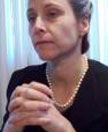 Golda Meir
Golda Meir
Presented by Helen M. Trencher: Russian born, American bred, and twice an immigrant to new lands, Golda Meir lived an extraordinary life-a life not without controversy or sacrifice-but an extraordinary one, nonetheless. During her adolescence, Golda became enthralled with the idea of a Jewish homeland-a Zionist nation where Jews could live and thrive. These ideas turned into actions, which informed the choices she made throughout her life. As a newlywed with a strong socialist nature, Golda and her husband, Morris Meyerson, in 1921 immigrated to what was then known as Palestine to work on a kibbutz (agricultural cooperative). Golda eventually left the kibbutz and became a working mother who dedicated her service to the fledgling country. She ultimately rose through the ranks of the provisional government to witness the birth of the State of Israel on May 14, 1948.
Golda Meir continued to serve her chosen country for the next 26 years in a variety of capacities-culminating as Prime Minister from 1969 through 1974.
Helen Trencher has a Masters in Education, a consulting background, and a love of performing. Since 1998, she has been a storyteller, percussionist, singer, and actor. Helen has performed for museums, libraries, city cultural events, and various ecumenical and private groups. She has been enthralled with the life of Golda Meir since she was a teenager, and creating a living history on Golda’s early years was a logical next step in Helen’s creative journey.
Additionally, Helen is founding member of the The Film Festival of Colorado, which held its inaugural year June 2010.
Suggested Reading: My Life by Golda Meir. NY: G.P. Putnam’s Sons; 1975., My Mother Golda Meir by Menahem Meir. NY: Arbor House; 1983., Golda: A Biography by Ralph G. Martin. NY: Ivy Books; 1988.
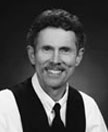 Enos Mills
Enos Mills
Presented by John Stansfield: Soon after he arrived from Kansas as “an invalid boy” at age 14 in 1884, Enos Mills bonded with Colorado’s wildlife, mountains, and wilderness. Growing strong and self-reliant, he roamed the American West summer and winter, experiencing numerous spine-chilling adventures, but always returned to his cabin at the foot of Longs Peak near Estes Park.
Famed explorer and nature writer John Muir inspired young Mills in his pursuits as naturalist, writer, speaker, and conservationist. Other titles aptly fit Mills, as well, including miner, nature guide, Colorado’s Snowman, innkeeper, and most especially, the “father” of Rocky Mountain National Park. As boy and as man, Enos Mills lived a remarkable mountain life.
Storyteller and author of a Mills biography, John Stansfield began following the tracks of Muir and Mills and exploring the West in 1960 and has never stopped. His book, Writers of the American West: Multicultural Learning Encounters , received a Colorado Authors’ League Award and was a finalist for the Colorado Book Award in 2002. With a Master of Arts in Teaching degree, Stansfield has taught elementary grades and now teaches on the adjunct faculty of the University of Colorado–Colorado Springs. The Wilderness Society presented him an Environmental Heroes Award in 2004 for his ongoing work to protect Colorado’s wild places.
Suggested Reading: Enos Mills: Citizen of Nature by Alexander Drummond. University Press of Colorado, 1995., Enos Mills of the Rockies by Hildegarde Hawthorne and Esther Burnell Mills. Temporal Mechanical Press, 2001 (1935)., Enos Mills: Rocky Mountain Naturalist by John Stansfield. Filter Press, 2005.
 Minnie Pearl
Minnie Pearl
Presented by Elsa Wolff: If it weren’t for Sarah Ophelia Colley, the world would have never known Minnie Pearl. But, there never would have been a Minnie Pearl if Sarah Ophelia Colley had had her way – at first.
A veteran of 51 years on the Grand Ole Opry, Minnie Pearl was country’s preeminent comedian and one of the most recognized and beloved performers American country culture has ever produced. With her gingham dress, a price tag dangling off her flower-strewn straw hat and her famous bellow of “Howdeeee!”, Minnie Pearl became known worldwide as an icon of rural America. Minnie Pearl wasn’t the means or path that Sarah Ophelia Colley would have chosen back when she started her career. Born into a well-to-do, cultured, Southern home, Colley was reared in a home where refinement and education were held in high regard. Aspiring to become a serious actress, Colley attended Ward-Belmont College in Nashville and studied stage technique and dance. Despite her aspirations of becoming a serious actress, she found that her natural comic flair kept sabotaging her attempts at serious parts, but she acknowledges, “God had been leading me in the right direction all along. He always does.”
Sarah Ophelia Colley Cannon became more known as Minnie Pearl than as herself, but she always considered Minnie not only her alter ego but her best one. Cannon never could have guessed that this funny, lovable country girl could become such an American institution — she grew to love and appreciate Minnie as the whole country did. Minnie Pearl (Sarah Cannon) became the first woman inducted into the Country Music Hall of Fame in 1975.
The world is grateful that a beautiful soul like Sarah Ophelia Colley Cannon did pass this way, leaving joy and laughter in her trail. Thank you, Minnie!
Storyteller, singer and speaker for 15 years, Elsa Wolff has enjoyed presenting Minnie Pearl throughout Colorado and Ohio. Using humor and sensitivity, she captivates the audience with her personable portrayal of this beloved comedian.
Suggested Reading: Colin/Colladay Escott, The Grand Ole Opry – The Making of an American Icon. Nashville: Grand Central Publishing, 2007., Minnie Pearl, with Joan Dew. Minnie Pearl. New York: Simon & Schuster, 1980., Queen of the Grand Ole Opry. Legacy-DNA, CD, 1993
 Eleanor Roosevelt
Eleanor Roosevelt
Presented by Susan Marie Frontczak: Meet first lady Eleanor Roosevelt. Starting in the 1920’s Eleanor worked to advance minimum wage, maximum hours, laws against child labor, women’s rights, women’s representation in government, civil rights, and other progressive causes. No other “first lady” had ever taken on such a public role. She continued to advance these causes while her husband was in office. She often served as her husband’s “eyes and ears” across the United States by inspecting factories, inner city tenements, military camps, etc. – because FDR’s polio confined him to a wheelchair. After his death, she became a delegate to the newly formed United Nations and led the development of the Universal Declaration of Human Rights.
Behind this public life is the story of a little girl who lost both parents before the age of ten, a debutante who felt trapped by society’s expectations, and a young wife who raised five children before emerging as one of the 20th century’s most influential women.
Because Mrs. R’s life is too big to fit into one Chautauqua program, Susan Marie has developed multiple programs set in different phases of Roosevelt’s life. Programs set respectively in the midst of the Great Depression, or during World War II, or at the United Nations, and others now take Frontczak nationwide.
Combing through over a thousand linear feet of Eleanor Roosevelt papers at Hyde Park, New York, Susan Marie finds Eleanor Roosevelt’s life almost too big to hold, and yet she is convinced this first lady’s story has a great deal to offer the world today. She believes that Mrs. Roosevelt’s civil and inclusive approach can guide us as we move forward.
Suggested Reading: The Autobiography of Eleanor Roosevelt, De Capo Press 1961., Eleanor and Franklin by Joseph P. Lash, New American Library 1971., Eleanor Roosevelt, Volumes 1, and 2 by Blanche Wiesen Cook. Penguin Books Vol 1 1992, Vol 2 1999.
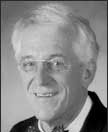 Franklin Delano Roosevelt
Franklin Delano Roosevelt
Presented by Richard Marold: Franklin Delano Roosevelt was elected president four times, more than any man in U.S. history. Although born and raised in a privileged New York family, FDR became the spokesman for the average American. After 1921 he was unable to walk on his own because of polio, but he later brought the country back to its feet.
During his administration, Social Security, the Securities and Exchange Commission and other programs were established to deal with the economic depression. Probably more than any president in the 20th century, FDR changed the executive branch into a stronger, more active partner in achieving the common good of the country. FDR dealt with two major crises of the 20th century: The Great Depression, which lasted through most of the 1930s, and World War II. Both crises elicited from FDR the humanity, vision, determination, negotiation and leadership which lifted him into the realm of great American presidents. During his presidency, from 1933 to 1945, FDR became known for his famous “Fireside Chats.”
Richard Marold is author of FDR – Pivotal American President. He holds a MA in Humanities from Penn State University and has portrayed FDR throughout his home state of Colorado as well as before educational and professional groups nationwide.
Suggested Reading: Traitor to His Class by H. W. Brands, Random House, 2007., FDR by Jean Edward Smith, Random House, 2007., No Ordinary Time by Doris Kearns Goodwin. Simon & Schuster, 1994.
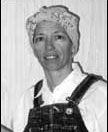 Rosie the Riveter
Rosie the Riveter
Presented by Gail M. Beaton: “Rosie the Riveter,” the name given to women war workers during World War II, lived and worked throughout the United States welding, making bullets, and doing a wide variety of factory jobs for the war effort.
Between 1941 and 1945, Colorado had its own “Rosies” working at the Remington Arms Factory in Denver. Located at the site of the present day Denver Federal Center, the Denver Ordnance Plant produced as many as six million bullets a day for U.S. troops. “Gail Murphy” is a composite character drawn from the records and memories of these women war workers.
Gail M. Beaton, a teacher of U.S. History, has taught for more than 26 years in Colorado public schools at the elementary, middle, and high school levels. She has two M.A. degrees; one in U.S. History and another in Public History from the University of Colorado/Denver. Gail has been acknowledged as an outstanding teacher by the Public Service Company and the Denver Chapter of the Daughters of the American Revolution. Her essays have been published in various history journals.
Suggested Reading: Bullets for the Yanks: Colorado’s WWII Ammunition Factory by Christine Pfaff. Colorado Heritage Magazine, Summer 1992., Rosie the Riveter Revisited: Women, the War, and Social Change by Sherna Berger Gluck. Twayne Publishers, 1982., The Home Front and Beyond: American Women in the 1940s by Susan M. Hartmann. Twayne Publishers, 1982.
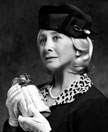 Irena Sendler
Irena Sendler
Presented by Judy Winnick: In the midst of the Holocaust, there was goodness.
Irena Sendler was the “Angel of the Warsaw Ghetto”. As a Polish Catholic social worker during World War II, she risked her life to save others. She was the leader of the children’s section of Zegota, Council for Aid to Jews, and part of the Polish underground. With ingenuity, calmness and courage, she was responsible for rescuing 2,500 Jewish children from the Warsaw Ghetto. To keep them safe she provided them with new homes, false identities, forged documents, and kept the only record of the children in hiding. Irena never thought of herself as a hero and said she simply did what needed to be done, and followed her heart.
Irena was born in 1910 and died in Warsaw in 2008 at the age of 98. During her lifetime she received many awards for her humanitarian work. In addition to being nominated for the Nobel Peace Prize in 2007, Irena was recognized by the State of Israel as one of the “Righteous Among Nations” at Yad Vashem. Throughout her life she never gave up hope and inspired others to make the world a better place.
During her teaching career, Judy Winnick received one of Colorado’s Distinguished Teacher Awards. Since her retirement, she has been portraying extraordinary women from history. She has performed Irena Sendler for libraries, schools, churches, synagogues, historical societies, and private organizations. Judy thrives on extensive research. Her audiences find her portrayal of Irena compelling and inspiring, just as she herself has been captivated by Irena’s story.
Suggested Reading: Irena Sendler: Mother of the Children of the Holocaust by Anna Mieszkowska, Praeger, 2011, The Path of the Righteous: Gentile Rescuers of Jews During the Holocaust by Mordecai Paldiel, KTAV Publishing House, 1993, Code Name: Zegota by Irene Tomaszewski and Tecia Werbowski, Praeger, 2010
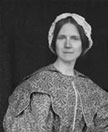 Mary Shelley
Mary Shelley
Presented by Susan Marie Frontczak: Teen-age mother, behind-the-scenes supporter of social reform, romantic, and scholar, English writer Mary Wollstonecraft Shelley (1797-1851) may be best known as the author of Frankenstein, but there is much more to be learned about her, both personally and psychologically.
As well as becoming a significant author in her own right, Mary Shelley bore the combined burden and blessing of being the only offspring between eminent authors Mary Wollstonecraft and William Godwin. Likewise, she enjoyed both attention and passion, and sustained rejection and isolation for becoming the wife of the outspoken and controversial poet Percy Bysshe Shelley. With stridently vocal parents and husband, Mary sought a gentler path of persuasion, opening her novels with the admired status quo, and ever so gradually leading the reader to a new point of view.
Themes include ostracizing someone based on their appearance; responsibility to abandoned and disadvantaged members of society; and moral choices related to technological advances.
Susan Marie was originally invited to develop a living history of Mary Shelley in connection with the American Library Association’s traveling exhibit “Frankenstein, Penetrating the Secrets of Nature.” The Chautauqua program now takes her nationwide. Frontczak is fascinated by the writer’s process – how an author like Mary Shelley rearranges elements from her own life, adds a bit if imagination, and constructs a novel that continues to challenge us almost two centuries after it was written.
Suggested Reading: Mary Shelley by Miranda Seymour. Grove Press, NY 2000., The Godwins and the Shelleys., Frankenstein by Mary Shelley., (For children) Frankenstein by Mary Shelley adapted by Larry Weinberg. True to the original story, reading level grades 3 & 4. Random House, New York 1982. ISBN 0-394-84827-6.
 Lucy Stone
Lucy Stone
Presented by Lyda Mary Hardy: It was Lucy Stone (1818-1893) who converted Susan B. Anthony to the cause of women’s suffrage. The first Massachusetts woman to earn a college degree, Stone graduated in 1847 from Oberlin, the only college that admitted women. Soon after, she began to lecture for the Massachusetts Anti-Slavery Society, at a time when it was forbidden for women to speak in public. Admitting that, “I was a woman before I was an abolitionist, I must speak for the women.” Stone spent her life devoted to women’s issues. She headed the American Woman Suffrage Association and edited the Woman’s Journal, the longest running publication supporting the rights of women. After being honored at the 1893 World’s Columbian Exposition in Chicago, Stone became sick and died. A fighter to the end, her last words to her daughter, Alice Stone Blackwell, were, “Make the world better.”
Lyda Mary Hardy has a B.A. from Alma College and a M.A. from the University of Michigan. Her interest in women’s issues began in Michigan in the early 1970s and was rekindled at the annual conference of the National Women’s History Project in California in 1994. She came to Colorado to be the librarian at Gunnison High School in 1977 and is presently in that position.
Suggested Reading: Lucy Stone: Pioneer of Woman’s Rights by Alice Stone Blackwell. Little, Brown Publishers, 1930., Friends and Sisters: Letters Between Lucy Stone and Antoinette Brown Blackwell, 1846-1895, eds. Carol Lasser and Marlene Deahl Merrill. University of Illinois Press, 1987., Loving Warriors: Selected Letters of Lucy Stone and Henry B. Blackwell, 1855 to 1895, ed. Leslie Wheeler. Dial Press, 1981.
 Winfield Scott Stratton
Winfield Scott Stratton
Presented by Richard Marold: Winfield Scott Stratton, an itinerant carpenter and prospector in the Rockies during the 1870s and 80s, became the envy of the mining world in the 1890s when he emerged from the Cripple Creek gold fields as a multi-millionaire. A paradoxical character who struggled under the burden of his wealth, Stratton contributed enormously to the building and beauty of Colorado.
In this program the history of the latter half of the 19th century in Colorado comes alive: the mass movement west, the lure of gold and silver, railroads, the flamboyance, greed and tragedy of those eager to get rich quick. In this “wild west” setting, Stratton stands out for his conservation, simplicity and sense of the common good.
Richard Marold is the author of Reluctant Millionaire on the life of Stratton. He holds a MA in Humanities from Penn State University. Richard Marold is editor of Cheyenne Mountain KIVA, a journal on the history of central Colorado Marold’s portrayal of Stratton is partly shaped by his family’s roots in the gold mining district of Victor and Cripple Creek, and his life in Colorado Springs.
Suggested Reading: Midas of the Rockies by Frank Waters. Swallow Press/Ohio University Press, 1989., Money Mountain by Marshall Sprague. Ballantine Books, 1953., The King of Cripple Creek by Marshall Sprague. Friends of the Pikes Peak Library District, 1994.
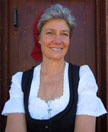 Maria von Trapp
Maria von Trapp
Presented by Elsa Wolff: The Sound of Music won five Academy Awards. It was not generally known that the movie was based on a real story. There really is a Maria von Trapp and her life story is even more captivating and surprising than the popular film. Matriarch of the Trapp Family Singers, Maria von Trapp (1905-1987) is a woman of passionate faith and uncompromising determination. Her life takes her from orphan to Baroness, from postulant at Nonnberg Abbey to mother of 10 children. Maria boldly leads her family from being refugees leaving Nazi-invaded Austria to becoming an internationally known singing group in America and around the world.
In this program, Maria enjoys comparing what people think they know about her from the musical with the true story. Sharing memories from pre-WWII Austria to the 1965 release of The Sound of Music, you’ll learn the story of the Trapp Family and their journey to a new home in America. The family faced many mountains to climb with challenges, set-backs and hard work. Maria’s is a story of overcoming and the faith to keep on trying.
Storyteller, singer and speaker for 16 years, Elsa Wolff was excited to add Maria von Trapp to her Chautauqua characters. Having spent 5 years living near the Austrian Alps, Elsa feels especially connected to the von Trapp family history. Using humor, story and music, she draws the audience in with this personal portrayal of Maria von Trapp.
Suggested reading: Maria von Trapp – Beyond The Sound of Music by Candice Ransom. Carolrhoda books, Inc. Minneapolis, MN, 2002., The Story of the Trapp Family Singers by Maria Augusta Trapp 1949., Yesterday, Today and Forever: The Religious Life of a Remarkable Family by Maria Augusta Trapp, 1952., Maria: My Own Story by Maria Augusta Trapp, 1972
 The Firey Particle: H.G. Wells
The Firey Particle: H.G. Wells
Performed by David Skipper: Discover ‘things to come’ with the Edgar Allan Poe of science fiction, H. G. Wells. Join Wells as he reveals the future of our world through an examination of his popular scientific romances The Time Machine, The Invisible Man, The War of the Worlds and The Island of Doctor Moreau. Did you know Wells predicted the world wide encyclopedia… the internet? Learn what Wells thought of Orson Welles 1939 Halloween broadcast of “War of the Worlds.”
David Skipper is a seasoned storyteller and actor, having over fifteen years of theatrical performance experience. He has utilized his Celtic, Hispanic and Native American ancestry to enhance his storytelling gifts throughout the years. Skipper is a former writer for “The Scottish-American” and “Scottish Banner” newspapers. He writes children’s fantasy and horror for his own amusement. He received his M.A. in communication arts from the University of West Florida in Pensacola.
Suggested Reading: * Experiment in Autobiography. By H.G. Wells. The Macmillan Company, NY, 1934, The Outline of History. By H.G. Wells. Garden City Books, NY, 1920., H.G. Wells: Aspects of a Life. By Anthony West. Random House, NY, 1984.
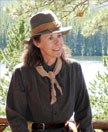 Martha Maxwell
Martha Maxwell
Presented by Mary Jane Bradbury: Martha Maxwell traveled to Colorado Territory with the first wave of the Pike’s Peak Gold Rush in 1860. A self-educated naturalist and artist, she found her passion and life’s work quite by accident and contributed to the development of taxidermy and museum display with ideas and techniques that are still used today. The foremost woman natural scientist of the 19th century, Martha was one of the first women to collect and prepare her own skins and mounts. She spent nearly eight continuous years in the field in the Rocky Mountains, documenting the presence of species previously not known to live there. Martha is the first woman to have a subspecies that she herself discovered named after her – otus asio maxwelliae – Maxwell’s owl. In 1876, she represented Colorado at the Centennial Exhibition in Philadelphia. A true trail blazer, Martha Maxwell’s inspiring journey is one of passion and determination.
As actress, speaker and educator for over 20 years, Mary Jane Bradbury has always been drawn to the natural world. She finds Martha’s resolute determination to pursue her love of science at a time when women were considered to have no aptitude for it inspiring. As an historic interpreter for the Denver Museum of Nature and Science, Mary Jane brings the stories of early women naturalists to life for audiences of all ages. She uses stories to remind listeners of all ages that, like Martha, they can be accomplish great things when they follow their dreams.
Suggested Reading: Martha Maxwell: Rocky Mountain Naturalist by Maxine Benson. University of Nebraska Press, 1986, Thanks to Abigail: A Family Chronicle by Mabel Maxwell Brace. Privately printed, 1948, On the Plains and Among the Peaks by Mary Dartt. Claxton, Remsen & Haffelfinger, 1878
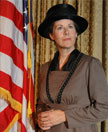 Jeannette Rankin
Jeannette Rankin
Presented by Mary Jane Bradbury: Suffragist, pacifist and tireless advocate for social reform, Jeannette Rankin was the first woman elected to the U.S. Congress, and the only member of Congress to vote against U.S. entry into both world wars. She worked for the cause of women and children during the reform decades of the early 20th century. As a lifelong pacifist, she served as a lobbyist for the Women’s Peace Union and was a representative for the National Council for the Prevention of War. Through her activities as a lobbyist before, during and after her terms in Congress, and her commitment to peace and governmental reform, she never stopped believing in and working for a peaceful world and a government in which people truly had a voice. Jeannette Rankin was a daughter, sister, congresswoman, and pacifist whose deep love for humanity makes her not only a hero of peace, but a symbol of hope.
A colleague of Jeannette Rankin once wrote of her, “Breathes there a man with a heart so brave that he would want to become one of a deliberate body made up of 434 women and himself?” Storyteller, speaker and educator for over 20 years, Mary Jane Bradbury uses her unique style to portray the remarkable moments of that bravery in this oft unsung woman’s life.
Suggested Reading: A Heart in Politics: Jeannette Rankin and Patsy Mink by Sue Davidson. Seal Press, 1994, First Lady in Congress: Jeannette Rankin by Hannah Josephson. Bobbs-Merrill Co., Inc., 1974, Jeannette Rankin: America’s Conscience by Norma Smith. Montana Historical Society Press, 2002
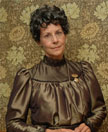 Augusta Tabor
Augusta Tabor
Presented by Mary Jane Bradbury: Often called the First Lady of Leadville, Augusta Tabor is a legend on the Colorado mining frontier. Though many consider her a footnote to the more well-known and scandalous rags to riches to rags saga of Silver Baron Horace Tabor and his second wife, Baby Doe, first wife Augusta Tabor stands alone as a pioneering businesswoman with a generous heart and strength of character that is the story of women on the western frontier. A wife, a mother, and one of the first women to come west in the Pike’s Peak gold rush, Augusta braved the journey across the prairies, the primitive, isolated conditions of the early mining camps and a devastating Victorian scandal and divorce with determination and grace. Augusta’s journey is the story of the triumph of the human spirit, and of adventure in the magnificent Rocky Mountains.
Storyteller, speaker and educator Mary Jane Bradbury has been portraying Augusta Tabor since 2001. She spent four summers in Leadville presenting the story of this remarkable woman to audiences at the Healy House Theater, during which time she gathered many Tabor anecdotes from locals whose families lived the history. Mary Jane has presented the Tabor story to hundreds of audiences in schools, museums, and corporate venues across Colorado, and it continues to be not only a story about the past, but one timelessly relevant to the present.
Suggested Reading: Augusta Tabor: A Pioneering Woman by Betty Moynihan. Cordillera Press, 1988., Horace Tabor: His Life and Legend by Duane Smith. Colorado Associate University Press, 1973., Here They Dug the Gold by George F. Willison. Reynal and Hitchcock, 1946.



